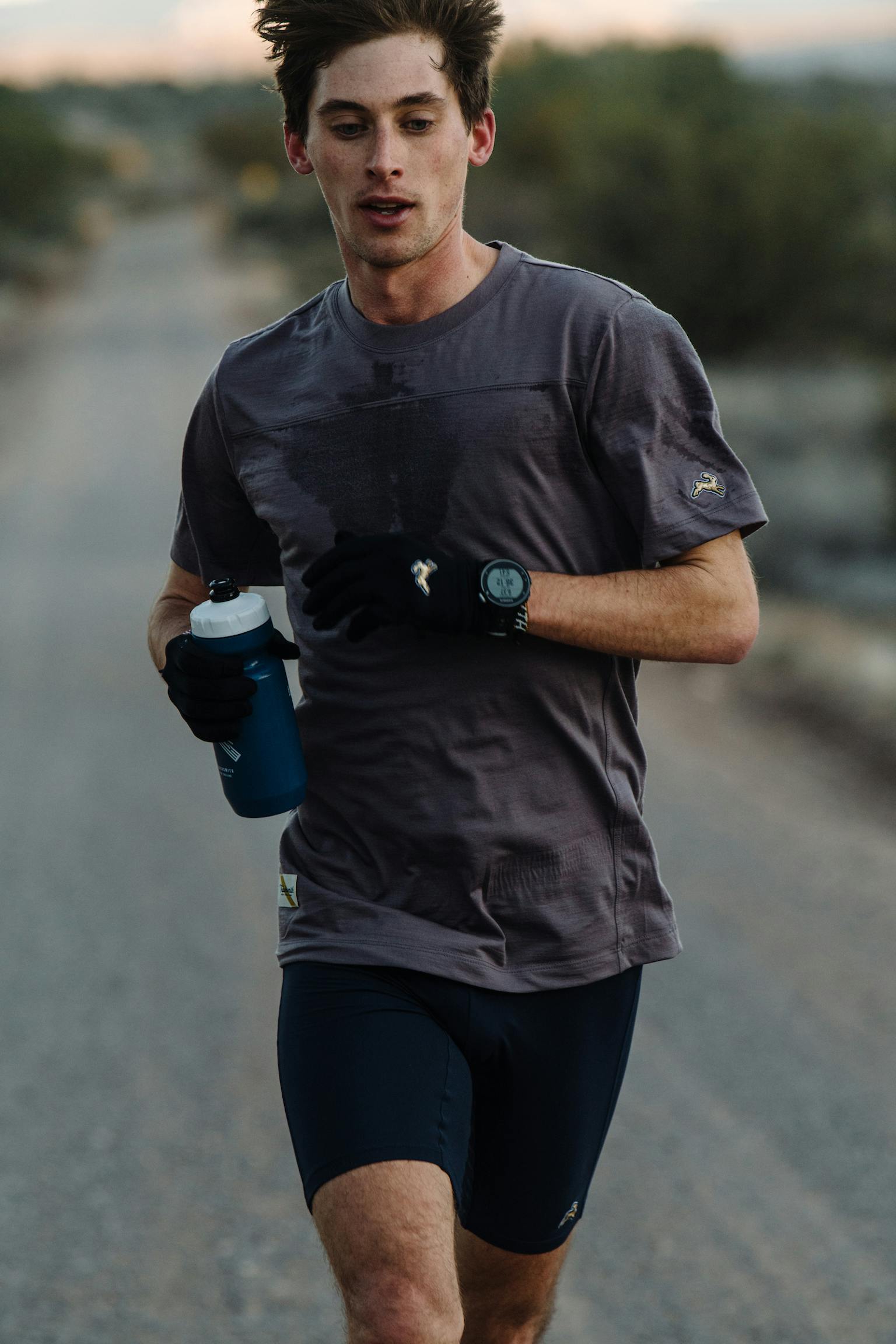
BRIDGING THE GAP
Words by Louis Serafini
Photography by Emily Maye
Everything probably feels a bit disrupted right now. Undoubtedly, you had a racing goal this spring. Instead, we’ve been met with a tidal wave of uncertainty. Events up in the air, postponed, canceled until further notice.
While this is a frustrating time for many, I’m choosing to look on the bright side. Yes. There is a bright side. Here it is.
This is a pass to run without an agenda. Without a racing goal. It’s freeing once you accept it. And ultimately an opportunity to get out there and just run, consistently, then reset, regroup, and smash that spring goal - even if spring is a distant memory when the time eventually comes.
You probably still have some goals in mind - that’s natural. You just don’t know when you’ll be able to tackle that marathon or go for that 1500 pb. Well, running without an agenda is actually a great opportunity to build an aerobic base that will set you up to achieve those goals. Moreover, with the uncertain future, it gives us options for the potential roads ahead.
Let’s break it down. How do you bridge the gap from now until your next race when you don’t even know when that race is?
Above all, you have to stay positive. The worst thing you can do is let yourself wallow. Running is a constant in our lives and we need it now more than ever. Try to appreciate it for that and enjoy the fact that even though you don't know what you’re training for, you can still get out the door and go for a run.
Once you’re in the right mindset, the next step is shifting your focus. There shouldn’t be any “sharpening” being done right now. With no races coming up, there’s nothing to sharpen for. I would urge you to get out and run mileage. Work on that base. Build that aerobic engine.
A week of base building looks pretty simple. You’re running easy most days, 30-60 minutes at a time. Once, maybe twice ahead you can work a light aerobic session in. For example: tempo runs, progressions, fartleks (I’ve shared some of my favorites below). Then on the weekend, one longer run of 1:15 to 1:45 at a nice steady effort. Maybe 30-60 seconds slower than your marathon pace.
And that’s pretty much that. If you run 90% of your peak mileage for 3-4 weeks with a good tempo and a good long run, I promise you’ll be strong when you come out on the other side.
Why should that be the focus? Well, it gives us the ability to keep our options open. You don’t want to shut it down because what if things get better? And you don’t want to be hyper specific because what if things don’t?
In three weeks we’ll know a lot more. Say things start trending positively (and let’s hope they do) and races start to pop-up on the calendar in mid-May? You can take that aerobic base you’ve built and start to refocus your energy onto your new next race goal. Let’s call that Plan A. Or the optimist’s plan.
Say things get worse. No races until June or July or later. Well. Then we start looking at plans B and C.
Plan B, in my eyes, is time trialing. You take 2-3 weeks to do some sharpening workouts and run a few hard efforts on the track or roads. It’s not the ideal way to use your fitness, but it’s not going completely to waste. Please don’t go try to time trial a marathon. But there's nothing wrong with a good hard 5k or 10k. Hopefully this will lead to a few PRs and then you can reset for Fall.
Plan C. For “Cut your losses.” Nobody wants to shut it down after months and months of hard work and no opportunity to show it off. But I’ve got news for you. All those workouts, and long runs you put in, all of those early mornings and late nights - they’re not lost. That fitness carries over to your next training cycle. And the best part is, your legs will feel more fresh at the end of it because you didn’t race.
If you're unable to run right now, injured, on lock down, or otherwise, I'd urge you to take advantage of this time to focus on some things you've neglected in the past. Core work, hip mobility, muscle stabilization if you can. Whenever I can't run, I try to tell myself, 'well, that's more time I have in my day to xyz.' Even if it's not an exercise, it's an opportunity to do something that you've put off doing.
The last and most important thing to keep in mind here is you can’t train right through the Summer and into the Fall. Whichever road this wild ride takes us down, please plan ahead and have a stopping point.
A proper training cycle ranges from 12-20 weeks. So. If you’re running the Boston Marathon in September for example… Your stopping point is mid-May. Shut it down, regroup and then start things back up in June.
In the meantime, you have the opportunity to go out there and log some miles while maintaining your current fitness level. Stay positive, keep your options open, and keep weathering the storm. If you do it right, you’ll come out even stronger on the other side.
Louis Serafini is Tracksmith's Community Manager and coach. He recently ran the Olympic Trials in Atlanta, placing 60th in 2:20:27.
